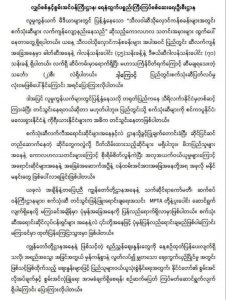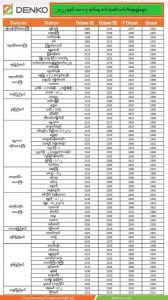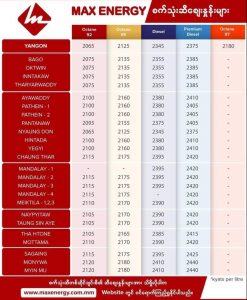The Fuel Crisis
PWIN OO LWIN, MANDALAY REGION // Early morning, the rumor of a vast fuel shortage started spreading across the whole country and crowds of consumers took petrol stations by storm. “I don’t know who the hell said that fuel delivery will be interrupted. I couldn’t rest the whole day because of that rumor. All morning long, people lined up to buy jerry cans and buckets,” said a worker in a petrol station in Pwin Oo Lwin, a scenic hill town and important military outpost formerly referred to as Maymyo.
The main national oil resellers companies such as Denko, Max Energy and Best Oil Company (BOC) tried to control the panic-buying by posting statements on their Facebook pages guaranteeing that they will provide “as much fuel as people want to buy”.
But the reality on the ground was different. For days, most petrol stations sold limited amounts of fuel, at a maximum amount of 20 to 30,000 MMK (10-15 EUR) per person, while the smaller ones even had to close. Some stations refused to sell to people who didn’t come with a car or a motorbike to avoid stockpiling and reselling.
Because of the spike in demand, the price rose overnight and one liter of 95 octane fuel increased from 2,100 to 2,300 MMK (1,08 – 1,18 EUR), in a country where the median salary currently stands at 545,000 MMK (280 EUR) per month. “When oil ran out, people flocked to buy it, prices skyrocketed, and taxi fares multiplied by up to three or four times” said a regular user of taxi services in Yangon.
The fuel crisis had a big impact in the cities, as shown in this video from Mandalay by Mizzima, but also in the countryside where most people depend on their motorbike because of the lack of public transport in rural areas. Farmers in villages are very worried not to be able to find enough fuel for their rented tractors and gas or diesel for their water pumps ahead of the paddy planting season.
The rumor spread after news that Thilawa Port, the main fuel delivery place in Myanmar, was out of stock on April 18th. According to the Ayeyarwaddy Times, “Chinese companies sell fuel to Myanmar through Sri Lanka”, a country currently hit by a massive economic crisis and widespread political unrest, provoking shipping delays in the region. The Irrawaddy adds that “the suppliers are struggling to import because of the regime’s restrictions on the use of US dollars” and that “stocks are running low”.
In a statement, the Ministry of Electricity and Energy and the Petroleum Products Inspection Department denied any issue of fuel shortage and stated that Myanmar’s imports mainly go through Malaysia, Singapore and Thailand and not through Sri Lanka.
The junta-controlled Ministry also claimed that 45 million gallons of petrol and 70 million gallons of diesel are now stocked at Thilawa Port and justified the delivery delays of unloading fuel into the storage tanks by the Thingyan New Year holidays.

Three weeks later, consumers are still worried and fuel prices remain high in Myanmar as shown in those tables from Max Energy and Denko companies on May 9th, 2022. A similar situation is unfolding in the rest of the world, which has been plunged into an energy and food prices inflation crisis after the invasion of Ukraine by Russia on February 24th, 2022.

